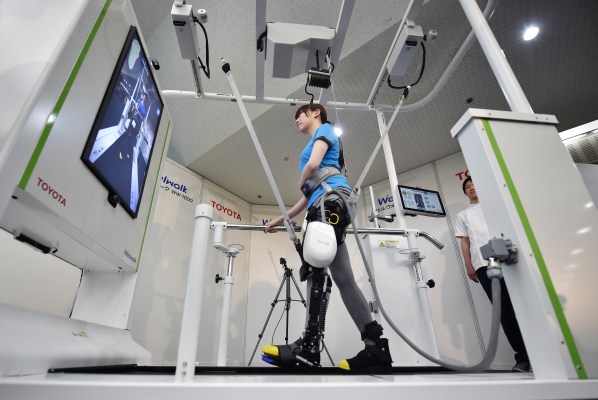Toyota is introducing a new robotic leg brace called the Welwalk WW-1000 that can help patients with partial paralysis affecting one side of their body walk again. The robotic exoframe is worn on the affected leg, with a large motor component at the knee joint that provides just enough assistance to the patient, letting them recover their own walking ability therapeutically over time.
The robotic wearable is paired with a custom treadmill and a harness that is anchored above the patient, with medical staff able to watch and control the whole apparatus from a convenient touchscreen input device. The Associated Press reports that the Welwalk system will be made available to medical institutions in Japan later this year, with a rental model that charges a one-time fee of around $9,000 and then $3,200 after that on a monthly basis. Those costs are not overly burdensome by medial equipment standards, and the system could drastically reduce recovery time for patients overcoming partial paralysis resulting from conditions include strokes.
[gallery ids="1475954,1475953,1475952,1475951,1475950,1475955,1475956"]
Reductions in recovery time come from how accurate the Welwalk system can be in terms of tweaking the amount of support it provides: Rehabilitating patients affected by this kind of partial paralysis involves gradually stepping back the amount of reliance they have on therapeutic support, until they’re able to walk independently once again. Toyota’s robotic brace includes built-in sensors that know exactly how much support to provide the patient at any given point, letting making sure they aren’t either over-reliant on support, or rushed before they’re ready, potentially resulting in re-injury.
Toyota has been working on robotics for many years now, and its Toyota Research Institute arm is devoted specifically to helping create technology that increases independence and quality of life for an aging population. Hyundai also demonstrated a range of personal support robotic wearables last year, and it’s likely to be an increased area of focus among automakers in general as their turn their attention and business focus to overall mobility, beyond just vehicles and transportation.
